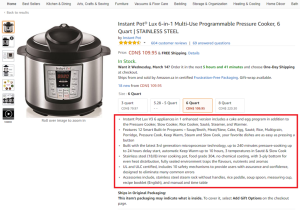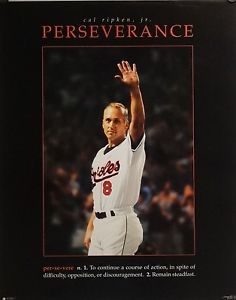Do you ever wonder how your video marketing campaign can pick up some more hits, views, and shares? Have you spent too much time trying to nail the formula for a successful video campaign? 
Many organizations often struggle to find the right approach to creating videos as part of their overall content marketing strategy.
Cisco released some gripping statistics in a study published earlier this year, estimating that “nearly three-fourths of the world’s mobile data traffic will be video by 2019. It’s no wonder why marketers of small, medium, and large companies have started to create viral video campaigns to reach audiences.
Though there is no hard and fast rule about what constitutes a viral video, the most important and universally shared characteristic is the magnitude of the video’s reach (i.e. how many people viewed the video) and the rate at which the video is being shared to the world. Understanding the following insights is crucial for developing videos that spread brand awareness to greater audiences.
Viral Video Marketing: Getting Started
There are a ton of highly successful viral video marketing campaigns created and uploaded by companies and organizations.
With what psychological studies and surveys in the business world tell us, most of the highly successful viral videos touch upon a couple of emotions that strongly connect with viewers.
For example, a study conducted by Fractl demonstrated that most successful viral content marketing strategies will often tap into positive emotions such as amusement, anticipation, excitement, rather than negative emotions such as guilt, sadness, and anger.
When working on your storyboard to draft ideas for a video, you want to be sure to choose the emotional connection that you want your company to create with consumers.
Following this particular approach will help clarify the angle you want to take and, more importantly, the way you want to brand your business.
Lessons From Experts
Let’s look at the most popular viral video campaigns from the past 5 years and examine some of the strategies companies and organizations have taken to spread their message on mass media. We’ll also go through some of the things that we can learn from the style and approach of the videos that garnered popular responses.
1. Videos That Make You Laugh
Content marketers have been relying on the use of humor to attract the audience’s attention for a long time, and considering the engagement most funny commercials and adverts receive, there’s no wonder why. Using humor in your video marketing campaigns to communicate a message in a witty, silly, and clever way is a surefire way to have customers and viewers sharing your content. Just look no further to the mania of excited television-viewers bent on voluntarily watching the commercials during the Super Bowl as proof of humor’s effectiveness.
Take a quick look at the Rainforest Alliance’s comical “Follow the Frog” campaign, a short 3-minute clip highlighting the things you wouldn’t do in order to emphasize the things that you can do.
The takeaways: Humorous videos should have a point that communicates a message beyond that of the jokes and punchline. In other words, make the content the vessel, and the style of the delivery your sail. You should also still have a strong Call-to-Action (CTA) unless you want viewers to merely associate your business with a funny clip and forget about your impact altogether. Notice the way the Rainforest Alliance weaves the CTA into the video and does so in a novel way by juxtaposing the organizations’ CTA with an obviously ineffective approach.
2. Videos That Feature Celebrities
Sponsorships, endorsements, cameos, and guest-starring by famous celebrity figureheads is a great way to get individuals to pay attention to your videos, if you have the budget. Not many people may care about the product or service you offer, but people will undoubtedly pay more attention when a recognized athlete, actor, singer, etc. is featured in a commercial.
Videos with endorsements and cameos are effective because they can tap into what Marty Neumeier described in his book Zag: The Number One Strategy of High-Performance Brands as “a band tribe,” or a ” group of customers who are linked by a common understanding of a product, service, or company.”
Broadly, celebrity endorsement can serve as this link, pushing viewers to internalize and identify with the celebrity’s behaviors, interests, and preferences. There is no wonder why many companies utilize celebrities and other influential people to bridge the gap of trust with someone familiar and credible.
Take a look at Samsung’s “The Next Big Thing” video starring actors Seth Rogen (Superbad, Knocked Up), Paul Rudd (I Love You Man, Anchorman), Bob Odenkirk (Breaking Bad), and basketball superstar LeBron James (who only appeared in a cameo until near the end of the video), which was aired during the 2013 Super Bowl.
The takeaways: Having celebrity endorsements and cameos featured in your videos may be a clever way to grab the attention of interested audiences. Remember, securing endorsements and partnerships can be costly, so only think about reaching out to popular figures if you can have a cautiously hedged estimate of the content’s return on investment. But if the budget exists, inviting a few stars to feature in your next big video may be enough to make the content viral and popular among bigger audiences.
3. Videos That Educate
Videos that educate do not always end with a specific or particularly strong CTA. These types of videos rely on facilitating discussions and thoughts on the complexities of a particular concern or topic. They emphasize details about real world issues in a visually engaging way and let the content of the video be the driver of the traffic to the business.
These videos also position businesses as thought leaders in their fields while also giving businesses a visual mechanism to communicate major rebranding efforts or pivots in company philosophy.
The video below is one that takes a 21st-century angle on the age-old tale of the three little pigs created by The Guardian. According to the daily newspaper, this video was created and uploaded to communicate the first major shift in the company’s philosophy and rebranding efforts in over 25 years. The aim of the video was to showcased the newspaper’s campaign to promote the concept of “multimedia credentials and open journalism” and does so by showing viewers a glimpse of the type of world in which open journalism is embraced.
David Kolbusz, BBH London, wrote that “[The Guardian] wanted to create a piece of creative that would do the job of explaining what creating a piece of open jouranlism was. It’s a product demonstration.
The takeaways: Leverage educational or informative videos to communicate a message that your company believes in. Do not be promotive when creating these videos, using them to show that your company and organization are thought leaders or to raise issues that people care about. Raising important questions and concerns that people care about by presenting valuable and educational content will invariably help brand your organization as a trustworthy and credible source for answers.
4. Videos That Evoke Warmth and Tears
“Tear-jerker” or “who put these onions in front of me?” videos try to pull at the viewer’s heart strings. These videos are produced by companies and organizations that try to have their products or services associated with a specific emotion.
Many of the videos that rely on drawing these powerful feelings try to focus on positive emotions fueled by concepts such as loyalty, friendship, love, and service. The gallery for videos that evoke warmth is extensive as it is one of the most compelling ways to get viewers to empathize with a universal concept or issue.
We’ll take a look at Guinness, one of the most successful beer brands worldwide. Below is their video emphasizing friendship, bonds, loyalty, and camaraderie.
The takeaways: Be careful on how you tread when teetering on somber emotions. This Thai life insurance company does an excellent job of employing a sad/gloomy approach but diffusing the melancholic undertones by reaffirming an element of closure. Take a look at this example if you are interested. The Thai life insurance commercial demonstrates that it is possible to create these types of videos tastefully. If you are interested, take a quick look at a company’s failure (Nationwide’s 2015 Superbowl advert) to approach these types of videos in a tasteful way: notice that it seems more promotive than valuable to the viewer and does little to focus on elements of positive closure.
Conclusion
Video marketing is becoming more and more important while the competition for audience’s attention is getting more fierce.
Your brand and name will inevitably be associated with the content you produce, so don’t be so trigger happy about displaying your company’s logo throughout your video. Understand what emotional responses you want to evoke in your audience and tell a story without being overtly promotive. If you focus on creating valuable content for your viewers, the shares, views, and hits will come along the way.
(181)






